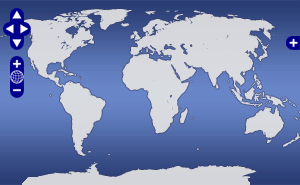
COAST: Heat flow derived from Bottom Simulating Reflectors (BSR) at the Cascadia Subduction Zone (investigators H. Paul Johnson, Evan Solomon, Robert Harris, Marie Salmi)
This heat flow data set was derived from Bottom Simulating Reflectors (BSR) imaged using active-source multi-channel seismic data acquired during the Cascadia Open Access Seismic Transects (COAST) survey conducted in 2012 along the Southern Cascadia Margin during R/V Langseth expedition MGL1212. The heat flow data and processing steps are described in Salmi et al., 2017. From each multi-channel seismic profile, the seafloor and BSR travel times were picked, and assuming 50% lithostatic/hydrostatic pressure and normal saline water, the temperatures were estimated. Thermal conductivity was assumed to follow the relationship provided by Davis et al., 1990 which correlates well with borehole data off Vancouver Island. The data file is in ASCII format and contains individual profile line number, common depth point (CDP), latitude, longitude, heat flow and its uncertainty, and seafloor depth derived from multibeam bathymetry also collected during cruise MGL1212. Funding was provided by NSF grants OCE11-44164 and OCE12-49552. Raw geophysical and seismic data can be downloaded from the Lamont-Doherty Earth Observatory Web site (http://www.marine-geo.org/tools/search/entry.php?id=MGL1212). Seismic profiles processed shipboard through post-stack time migration can be downloaded from the University of Texas Institute for Geophysics seismic database (http://www-udc.ig.utexas.edu/sdc/cruise.php?cruiseIn=mgl1212).
Johnson, H. Paul
Investigator
UW
Solomon, Evan
Investigator
Harris, Robert
Investigator
Salmi, Marie
Investigator
UW
Device Info
Seismic:
Platform
Marcus G. Langseth
LDEO
Awards
Data DOI
Quality
2
The data have been processed/modified to a level beyond that of basic quality control (e.g. final processed sonar data, photo-mosaics).
Data Files
References
Acquisition Information
Documents
Data Citation Information
ISO/XML Metadata
Expand

 Map View
Map View
